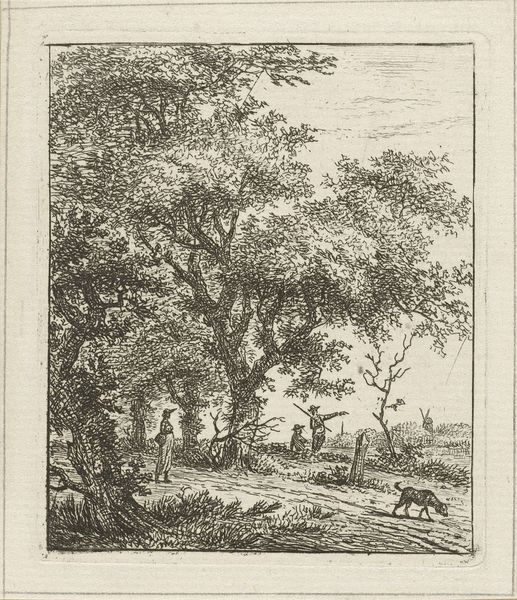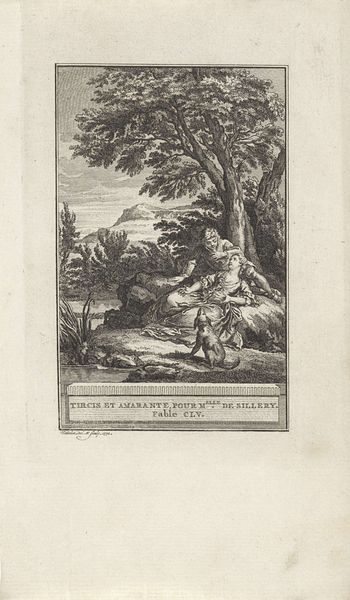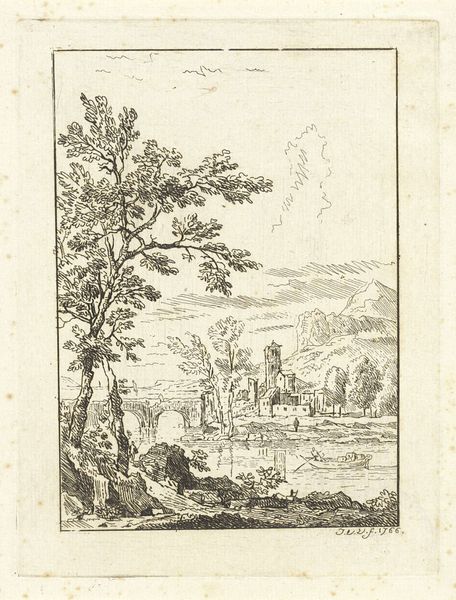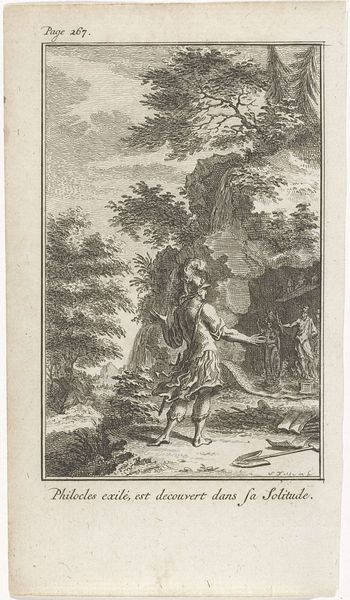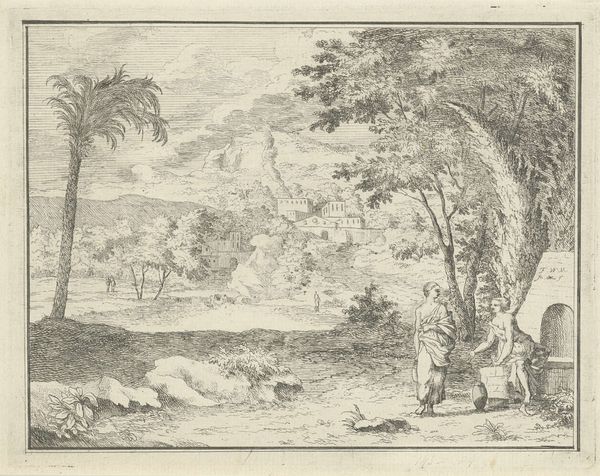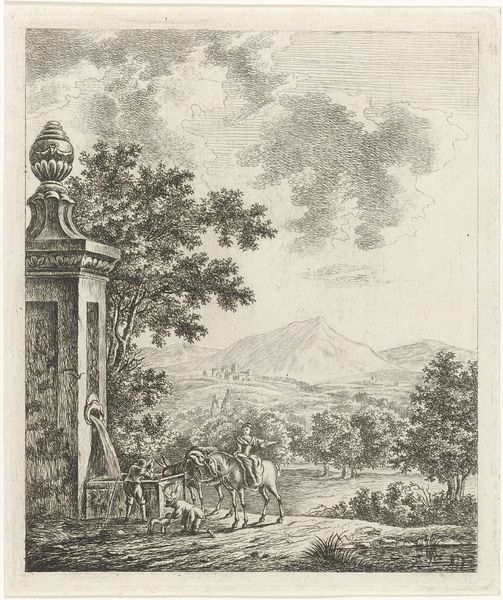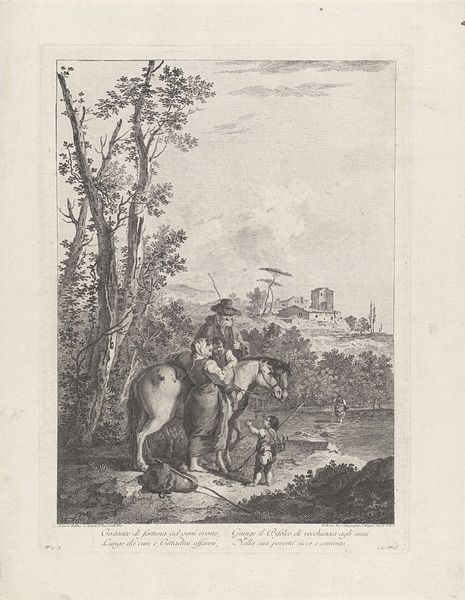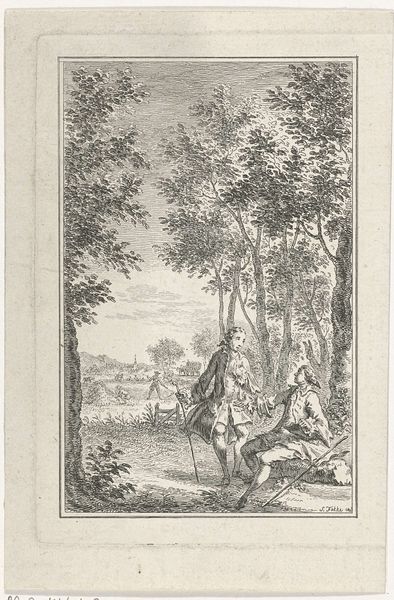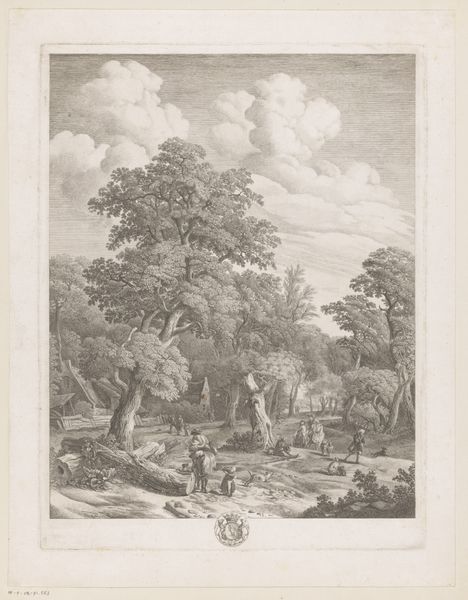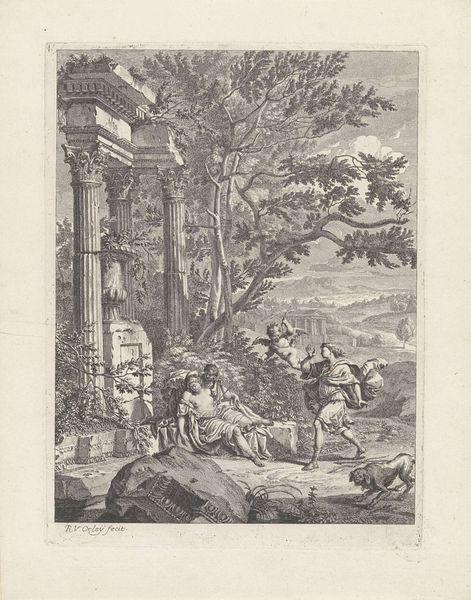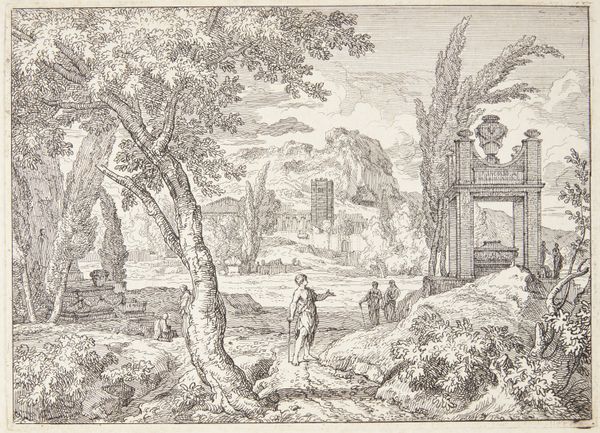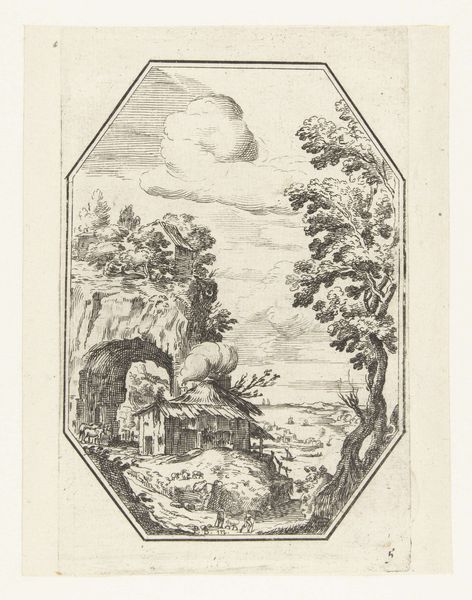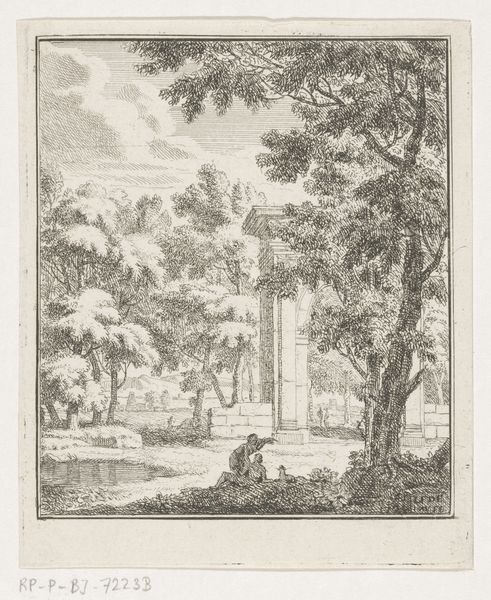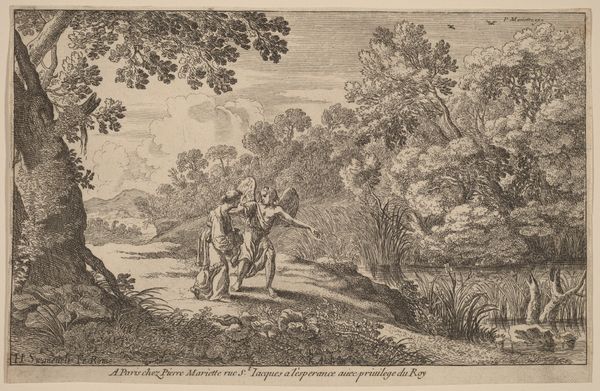
Dimensions: height 154 mm, width 114 mm
Copyright: Rijks Museum: Open Domain
This is an etching, Badende meisjes, by Simon Klapmuts. The image is made through a fascinating process of collaboration between the artist and the material. To create this print, the artist would have coated a metal plate with a waxy, acid-resistant ground. Using a sharp needle, the design was then scratched into the ground, exposing the metal beneath. When the plate was dipped in acid, the exposed lines would be etched, creating grooves. Ink was then applied to the plate, filling these grooves, and the surface wiped clean. Finally, paper was pressed against the plate, transferring the ink and resulting in the image we see. The very act of etching is a dialogue between intention and accident. The acid bites into the metal in ways that can be controlled but also sometimes surprising. This kind of printmaking became a critical part of the industrialized image-making that emerged in early modernity, connecting art to a wider world of labor, economics, and accessibility. The appeal of the artwork resides not only in the image but also in understanding this production process. By recognizing this, we move beyond traditional fine art boundaries and appreciate its place in a broader history of craft and design.
Comments
No comments
Be the first to comment and join the conversation on the ultimate creative platform.
